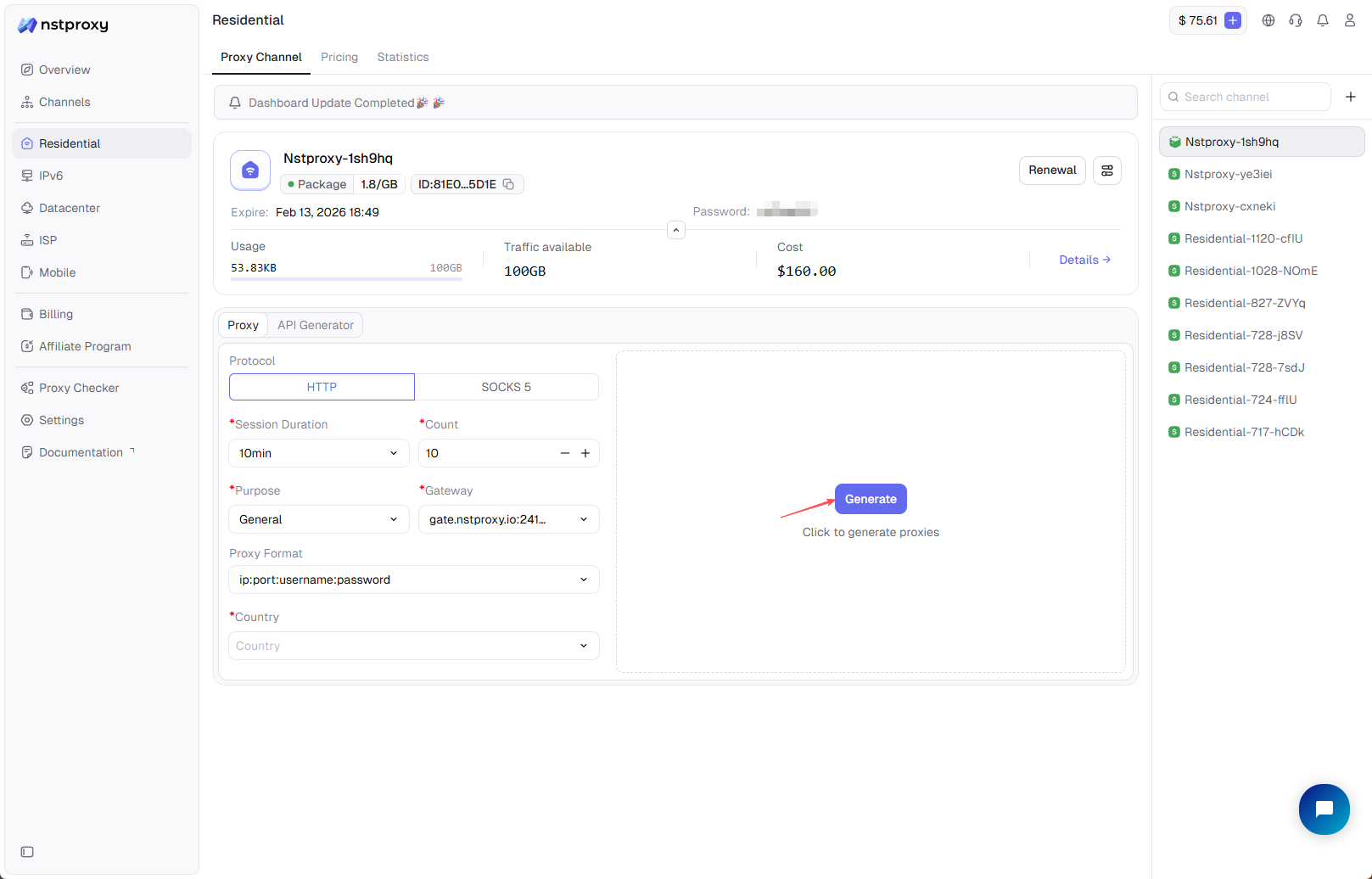Common Issues
HTTP(s) Response Codes
400: "Bad Request: If the request does not contain the host to connect to or a general error occurs during HTTP request resolution, the proxy server may return this error code. Ensure that your request format is correct. Include the URL in the request and try again.",
401: "Unauthorized: When your request fails authentication on the target website, the proxy server returns this error. Make sure you provide the correct website authentication information when making the request.",
403: "Forbidden: When access to the target website is blocked by the proxy server, this error is returned. Try using a different proxy server location or port.",
404: "Not Found: The requested resource is not found. Typically thrown when requesting broken or invalid links. Make sure you have entered the correct link.",
408: "Request Timeout: Regardless of the set value, the server closes the connection due to timeout. Try resending the request. If the problem persists, try changing the endpoint or session type of your request.",
407: "Proxy Authentication Required: The request lacks proxy authentication information, or the username or password is invalid, or the channel resource has been exhausted.",
500: "Internal Server Error: The proxy server encountered an internal error. Retry the request later.",
502: "Bad Gateway: The proxy server received an invalid response from the upstream server. Retry the request.",
503: "Service Unavailable: This typically means the server (in this context, it can refer to the proxy server or the target resource) is currently closed or severely overloaded and unable to provide a normal response. Retry your request and check if your target resource is in maintenance mode.",
504: "Gateway Timeout: The proxy server did not receive a timely response from the upstream server. Retry the request.",
522: "Connection Timeout: A custom HTTP status code indicating a timeout during the CONNECT phase of proxy connection.",
525: "Exit Not Found: A custom HTTP status code indicating that the proxy could not find an exit node that satisfies the request. Change the request filter parameters or retry later."。
407 Proxy Authentication Error
The HTTP 407 Proxy Authentication required error response indicates that the request failed due to lack of valid authentication credentials from the proxy server.
Below are the steps we recommend when encountering the error:
- Double-check your user:pass credentials in the nstprxoy dashboard.
- If you are using whitelisted IP authentication, check that you are connected to the same IP address.
- Check if your channel traffic has run out, or reached your limit, or if the channel has expired!
Unable to Connect
Proxy connection requires meeting certain conditions to connect to your device.
First, please ensure that you:
- Are connected to the internet.
- Open the connection port.
- Are not connected to other proxies or VPNs.
- Use the correct proxy address and valid port. Refer to How to Use a Proxy?
- Receive connection errors from websites rather than HTTP status codes. For more information, see HTTP(S) Error Codes.
Other options you can try:
- Disable antivirus applications (if any).
- If using a remote server, ensure that the firewall has a pass-through for the proxy port you are using.
- Different endpoints.
- Try connecting with different proxy tools.
- Try different networks (mobile hotspot, another Wi-Fi network, etc.).
What to Do If the Internet Speed is Slow When Using IP?
The proxy upload and download speeds range from 2Mbps to 5Mbps (1Mbps = 128kb/s). If the internet speed is slow, you can try reducing the number of open windows or troubleshooting the network speed.
How to Use Proxies?
-
Acquire Proxies: Click on the appropriate type of proxy management, create a channel, and then generate proxies.


-
Copy the proxy details to use

Sticky IP vs Rotating IP:
Sticky IP: This means the current IP will remain unchanged as long as it remains valid; it will automatically switch once it becomes invalid.
Rotating IP: Every request will receive a new IP, regardless of whether the IP has become invalid.